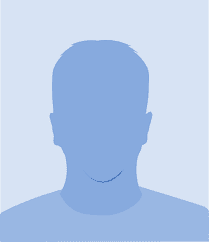Individuals living with rosacea can create a personalized treatment plan by consulting with a dermatologist or skin specialist. At the same time, healthy lifestyle choices, regular dermatological check-ups and a supportive social environment are important to improve skin health and keep symptoms under control. This skin condition affects physical appearance. Therefore, it can have effects not only on the skin, but also on a person’s emotional and social life.
What is rosacea?
Rose disease is called “rosacea” in medical terms. Rosacea is a skin condition that generally causes redness, swelling and small red veins on the face. This condition generally affects middle-aged adults, but it should be noted that it can affect people of all age groups. Rosacea is generally recognized by distinct symptoms that appear in the facial area.
Although the cause of rosacea is not known exactly, genetic predisposition, skin care habits, environmental factors and some microorganisms are thought to play a role. Factors such as exposure to sunlight, stress, hot drinks, spicy foods and alcohol are listed as factors that are thought to trigger rosacea symptoms.
What are the symptoms of rosacea?
Rosacea, or rosacea, is defined as a skin condition with distinct symptoms that usually appear in the facial area. Symptoms may vary from person to person and the severity of the disease may increase over time. “How to detect rosacea?” To answer the question, the symptoms of rosacea are listed as follows:
- The most obvious symptom is redness, which usually appears in the middle part of the face, forehead, around the nose, cheeks and chin.
- This rash often causes a “rose”-like appearance.
- The capillaries in the facial area become enlarged and prominent, this condition is called “telangiectasia” and creates a red-veined appearance on the face.
- In some patients, the skin in the facial area may swell. Bloating can cause an overall soft and warm feeling.
- Rosacea can cause red blisters to appear on the face. These blisters are often similar to acne but different.
- With rosacea, symptoms such as eye irritation, redness, dryness of the eyes and sometimes sensitivity to light may be observed.
- Rarely, rosacea can also affect other facial areas such as the lips and ears.
How is rosacea treated?
Rosacea can be a difficult skin condition to treat, but there are a variety of treatment options available to control symptoms and provide relief to patients. Treatment is individualized by taking into account the severity of symptoms, the patient’s general health condition and triggering factors. “How to cure rosacea?” To answer the question, some common methods used to treat rosacea can be listed as follows:
- Topical medications prescribed by dermatologists can be used to relieve and control rosacea symptoms.
- Oral antibiotics may be prescribed to reduce the inflammatory symptoms of rosacea.
- Sun protection, a hat and sunglasses may also be important.
- People with rosacea can often use special creams and lotions to reduce skin sensitivity and soothe the skin.
- Laser treatment can be applied to relieve rosacea symptoms by targeting the capillaries on the skin surface.
- Factors that can trigger symptoms in some people include spicy foods, alcohol, hot drinks, hot weather and stress.

